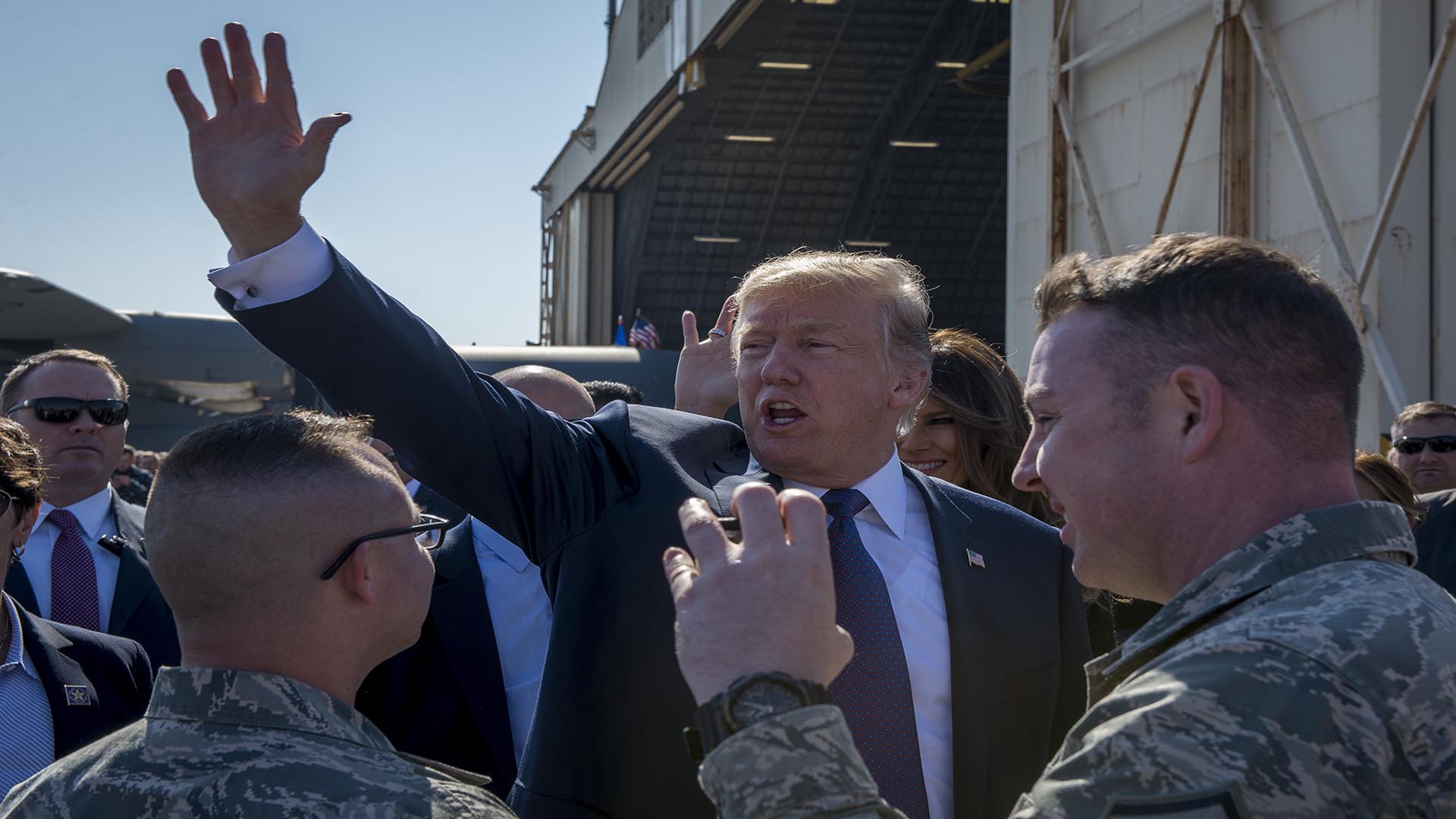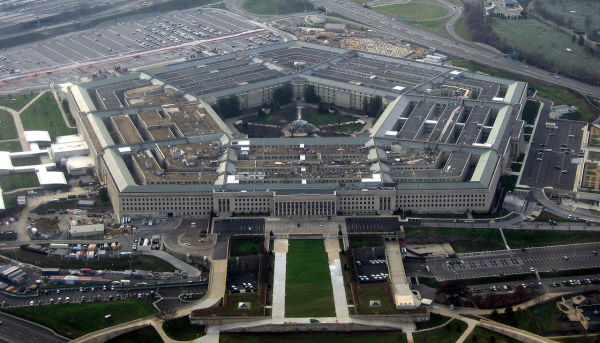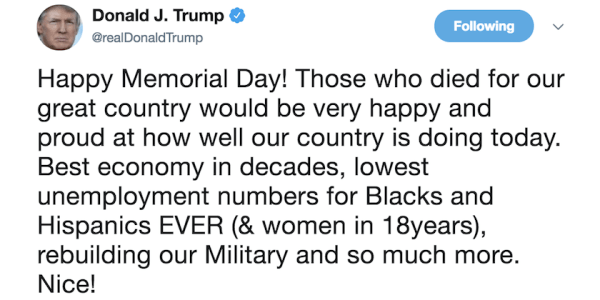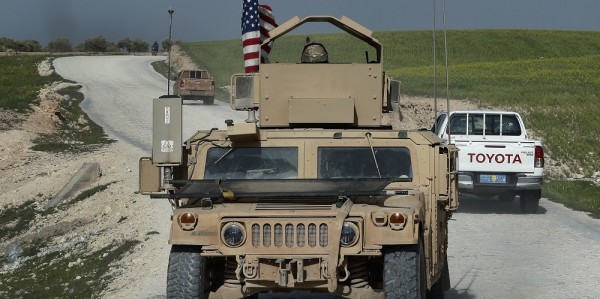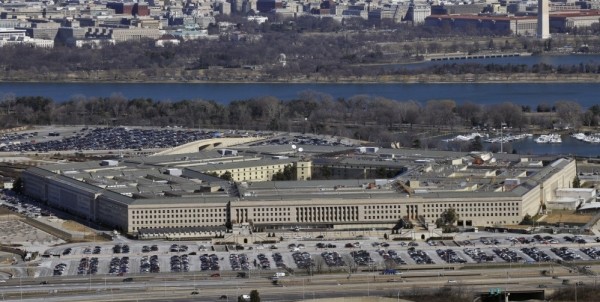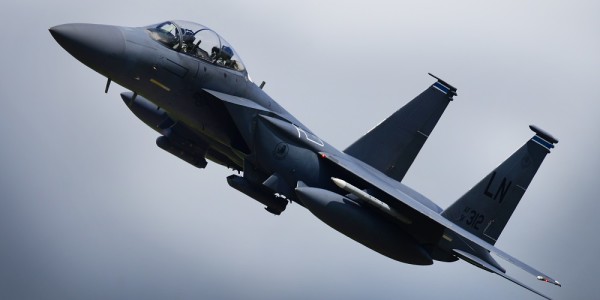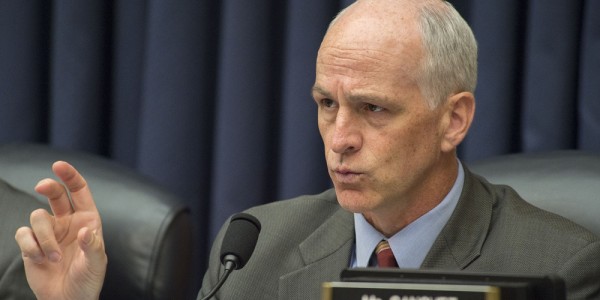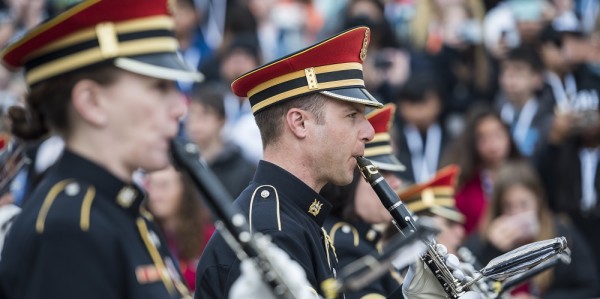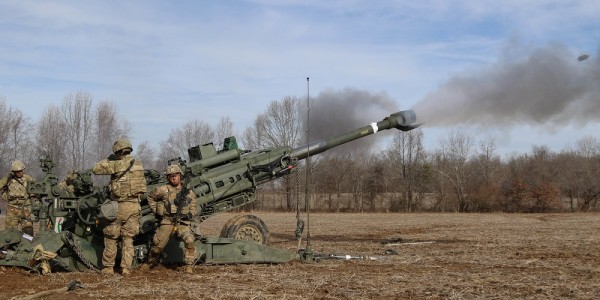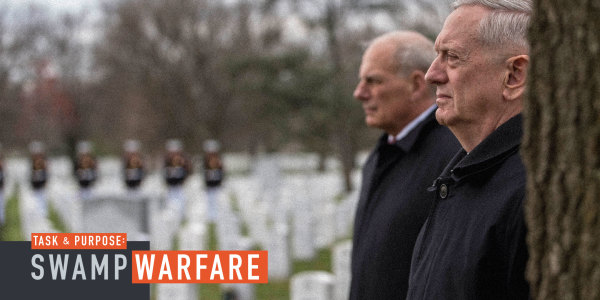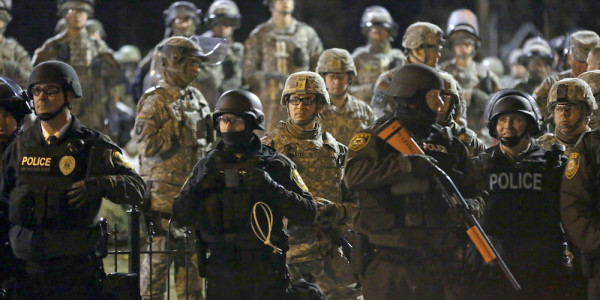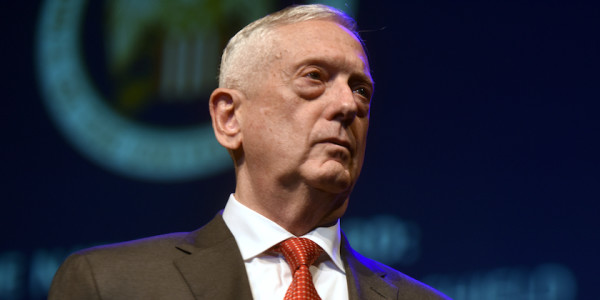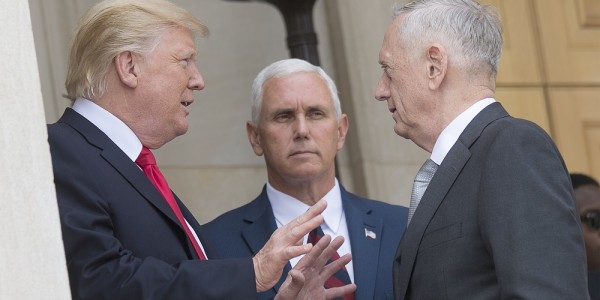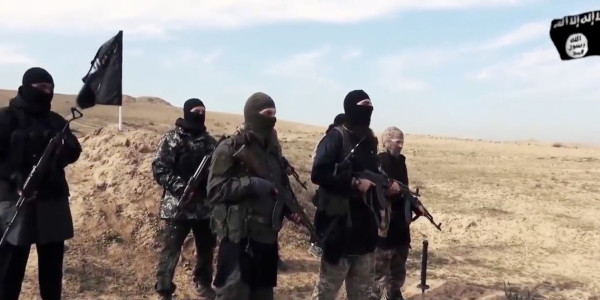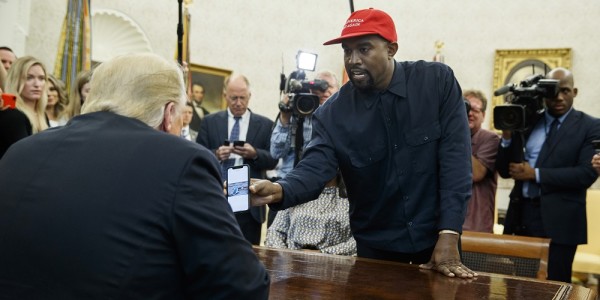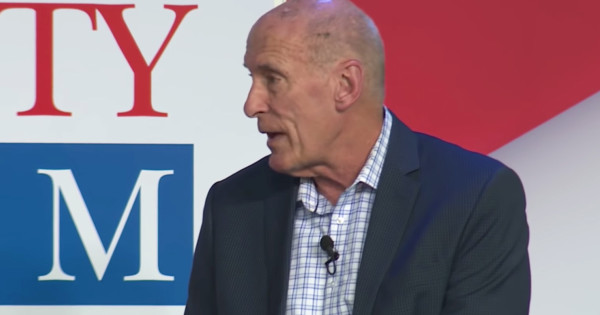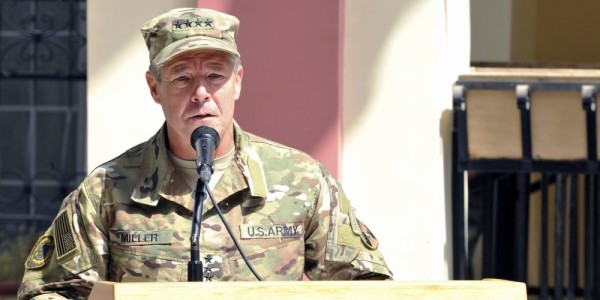President Donald Trump came into office pledging to rebuild the U.S. military, which in 2016 was in the deep throes of a readiness crisis caused by spending cuts, delays in weapons programs, the never-ending grind of overseas operations, and elected officials who could care less if service members were overworked and unprepared to fight the next war.
True to his word, Trump oversaw massive increases in the Pentagon’s budget, which grew from $582 billion in fiscal 2017 to $705 billion in fiscal 2021. He also repeatedly let voters know just how many new F-35s, tanks, and ships the Defense Department was able to buy with its bulging coffers and he bragged about new military technology being developed, including the so-called “super duper missile.”
Trump also showed far less enthusiasm for overseas adventures than his predecessors. He lamented that signing letters to the parents of fallen service members was the most difficult part of being president. And he repeatedly vowed to end the wars started in the wake of 9/11.
While his presidency did not see the end of the Forever Wars, he is leaving the job with the fewest number of troops in Afghanistan since 2001. The remaining forces are expected to leave the country by May under a withdrawal agreement with the Taliban that abandons the Afghan government to its fate. (The Taliban finally see victory within their grasp)
During the Trump administration, the Islamic State terror group lost its territorial caliphate and went underground as a potent insurgency. Special Forces troops killed the group’s leader Abu Bakr al-Baghdadi in 2018 – an accomplishment that rises to the level of the bin Laden raid.
But Trump’s tenure as commander in chief has also included undeniable stains on the U.S. military’s reputation and the tradition of civil-military relations that goes back to the Republic’s inception.
On his watch, the Defense Department banned certain transgender individuals from being able to enlist in the military or be commissioned as officers. Trump also became personally involved in the cases of current and former service members accused or convicted of war crimes. In fact, he became the personal advocate for Navy SEAL Eddie Gallagher, ultimately leading to the Navy secretary at the time being fired.
More recently, Trump has attempted to halt efforts to rename military bases, ships, and other assets that are currently named for Confederates. When protests against police brutality erupted in the nation’s capital, Trump reportedly wanted to deploy thousands of active-duty troops in response.
He publicly mocked two of his defense secretaries – retired Marine Gen. James Mattis and Mark Esper – and he has accused Pentagon leaders of wanting to wage endless wars to make money for the defense industry.
His constant tweets became official edicts that issued confusing and contradictory orders to military leaders about drawdowns in Syria and Afghanistan, which were ultimately overturned or pared down.
On the international stage, Trump went from “Fire and Fury” to pure bromance with North Korean dictator Kim Jong Un. But the president ended up walking away from Kim’s denuclearization proposal and the only lasting results of his attempt at détente have been the cancellation of large scale U.S. and South Korean military exercises.
When it came to Iran, Trump took a much more combative and risky stance. He pulled the United States out of an international agreement that limited Iran’s nuclear program and in Jan.3, 2020, the two countries came to the brink of war when a U.S. airstrike killed Iranian Maj. Gen. Qasem Soleimani, former head of the Islamic Revolutionary Guard Corps, and Abu Mahdi al-Muhandis, then commander of militia group Kata’ib Hezbollah.
Iran retaliated shortly afterward by launching ballistic missiles at U.S. troops in Iraq, leading to 110 service members being diagnosed with mild traumatic brain injury.
One of the darkest moments of Trump’s presidency was when he was accused of using an arms sale as leverage to force the Ukrainian government to investigate President-elect Joe Biden’s son Hunter for alleged corruption.
Trump was acquitted of any wrongdoing at his first Senate impeachment trial, but he lashed out at Army Lt. Col. Alexander Vindman, who testified against him, and ultimately launched a purge against Vindman and several government officials whom the president deemed disloyal.
As his administration neared its end, Trump packed the Pentagon with his loyalists and left many senior leadership positions unfilled. The Defense Department managed to limp on, but just barely.
With his departure from the White House imminent, Trump does not have to wait for history’s verdict on his tenure as commander in chief: He was erratic, impulsive, and dangerous. His role in inciting the Jan. 6 insurrection on Capitol Hill will overshadow any good he did for the U.S. military.
In the words of retired Gen. Mattis, Trump is leaving office as “a man without a country.”
Not getting the Pentagon Run-Down? Sign up here!
Jeff Schogol covers the Pentagon for Task & Purpose. He has covered the military for 15 years and embedded with U.S. troops in Iraq and Haiti. Prior to joining T&P, he covered the Marine Corps and Air Force at Military Times. Comments or thoughts to share? Send them to Jeff Schogol via email at schogol@taskandpurpose.com or direct message @JeffSchogol on Twitter.

